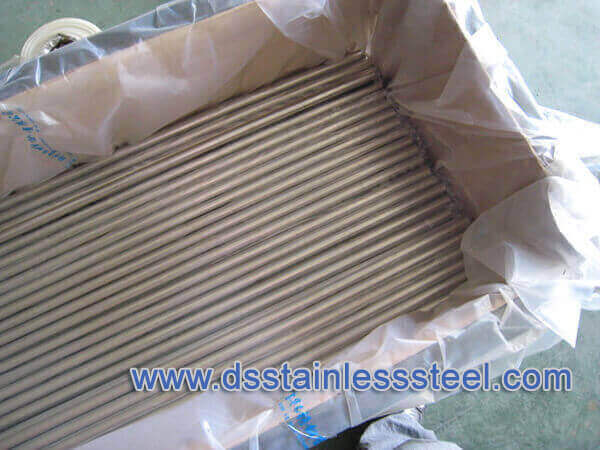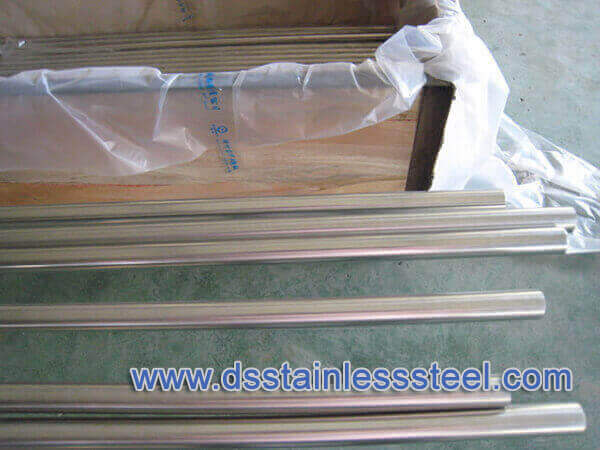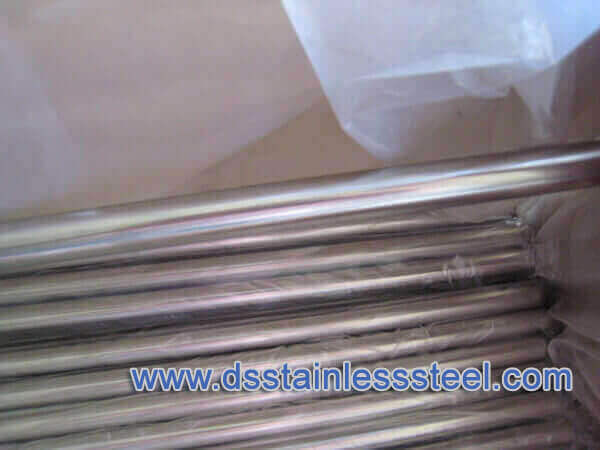Dongshang Stainless offers food-grade stainless steel tubing for sanitary, dairy and food applications, sizes range from 1/2″ to 8″ in outside diameter, there are various stainless steel grades to select from, 300 series and 400 series grades available, it is suitable for food processing due to their composition and properties, and not harm human health.
Generally, these tubes meet both ASTM A270-S2 and 3A specifications, surface roughness can reach 20Ra Max inner diameter (ID) and 32Ra Max outer diameter (OD) via mechanical polishing, and polished tubing undergoes multiple passes through the polishing heads to remove any unwanted residue, and undergoes a rigorous quality inspection, including destructive and non-destructive examination, at the mill before shipment.



Stainless Steel Features & Benefits
Stainless steel has a minimum of 10.5% chromium content by mass and a maximum of 1.2% carbon by mass, other elements added, like nickel, silicon, nitrogen, and manganese, the chromium content protects the stainless from oxidation (rust), Nickel also enhances the corrosion resistance of stainless steel. Stainless steels are widely used in food and beverage manufacturing and processing industries for manufacture, bulk storage and transportation, preparation and presentation applications.
stainless steel not only can withstand harsh temperatures, but its oxidation protection layer can also prevent rust and prevent food contamination. One of the most important characteristics of food grade stainless steel is that it does not contain hazardous chemicals that may transfer to food.
Food grade stainless steel is the best material choice for the food industry. Stainless steel has multiple grades to choose from, and its many beneficial properties and characteristics ensure that it meets all food safety and hygiene standards, making it an ideal material for various food applications.
Safe
Firstly, safety is the most important factor to consider for food processing, stainless steel contains various chemical elements to maintain its properties, and some elements in large quantities are harmful to human health, according to studies and research, standard stainless steel is safe, like Nickel and Chromium contents, they are not harmful in small quantities, we believe that stainless steel is one of the safest materials for food industry, nowadays, stainless steel is widely used in food industry.
Excellent Corrosion Resistance
Stainless steel has better corrosion resistance compared to other metals, there is a protective layer on the surface of stainless steel to prevent corrosion attack, and it has self-repair ability, so it is not easy to rust and stain in the right way.
Stainless steel can resist pitting, chipping, crazing, scratching, scoring, distortion, and decomposition, in kitchens, and corrosion resistant to various acids found in meats, milk, fruits and vegetables.
Easy To Clean
The surface of stainless steel is always smooth, according to ASTM A270 sanitary tubing standard and 3 A sanitary standard, stainless steel roughness can be reached at a high level, and there are no places to hide residue.
For stainless steel material, there are multiple finishes to select from, such as 2B, BA, and polishing.
Typical Food Grade Stainless Steel
304 Stainless Steel
304 is standard 18/8 chromium-nickel grade, it is the most commonly used food-grade stainless steel, it can withstand corrosion from most oxidizing acids, the durability of 304 makes it easy to sanitize, and therefore ideal for many kitchen and food applications. It also has good forming and welding properties, allowing it to be manufactured into a variety of shapes.
Cheaper than 316L, 304 is an economical and practical choice for most environments.
- Brewing
- Milk processing
- Wine making
- Refrigerators
- Stoves
- Sinks
- Dishwashers
- Fermentation vats
- Storage tanks
316L Stainless Steel
316L is the second most commonly used food-grade stainless steel, contains 16% chromium, 10% nickel, and 2% molybdenum, it has better corrosion resistance because it possesses more nickel and higher molybdenum content than 304, especially in chloride environments, such as salt.
Compared to 304, 316L is an expensive option, but it can be used in severe corrosion environments, and the application requires greater strength and hardness, 316L makes for great food-grade stainless steel containers for nearly any food application.
430 Stainless Steel
430 has less nickel content and the same chromium content as 316L, therefor it makes it a more affordable alternative for some food makers, 430 SS has a strong resistance to nitric & organic acids and is often used for applications where prolonged contact with mildly acidic compounds is a concern. The alloy also boasts a resistance to sulfur and oxidation.
Typical applications of the various stainless steel types
| Types | Typical Applications |
|---|---|
| 420, (martensitic) | Vats, bowls, pipework, machinery parts, (i.e. components requiring some formability or weldability). Corrosion resistance is superior to 430. |
| 430, (ferritic) | Table surfaces, equipment cladding, panel, (i.e. components requiring little formability or weldability). Used for moderately corrosive environments, (e.g. vegetables, fruits, drinks, dry foods, etc). |
| 304, (austenitic) | Components are used with more corrosive foods, (e.g. meat/blood, foods with moderate salt contents), which are frequently cleaned, with no stationary solids and not under excessive stress. |
| 316, (austenitic) | They are used with corrosive foods, (e.g. hot brine with solids, stagnant and slow moving salty foods). Higher strength than austenitics. Good resistance to stress corrosion cracking in salt solutions at elevated temperatures. |
| 1.4539, (austenitic) | They are used with corrosive foods, (e.g. hot brine with solids that act as crevice forms, stagnant and slow-moving salty foods). |
| 1.4462 (duplex) | They are used with corrosive foods, (e.g. hot brine with solids, which act as crevice formers, stagnant and slow moving salty foods). Good resistance to stress corrosion cracking in salt solutions at elevated temperatures. Used in steam heating and hot work circuits, hot water boilers, etc |
| 6%Mo. types (austenitic) | They are used with corrosive foods, (e.g. hot brine with solids, which act as crevice formers, stagnant and slow-moving salty foods). Good resistance to stress corrosion cracking in salt solutions at elevated temperatures. Used in steam heating and hot work circuits, hot water boilers, etc |
Making Food Grade Stainless Steel Parts Cleaning
Food grade stainless steel has many and properties and advantages to use in food processing, but there are a few things that you should know about food-grade stainless steel parts.
- Do not put salt, soy sauce, vinegar, vegetable soup and other things for a long time. People who have learned chemistry know that these substances contain a lot of electrolytes, which will make them react chemically and release toxic elements
- Alkaline substances and organic substances cannot be stored in it for a long time, which will also promote chemical reactions in stainless steel
- Keep the stainless steel parts clean and dry, especially when containing acid and alkali substances, and wash them out as soon as possible
- Do not think that ordinary stainless steel material will not produce bacteria if its surface is smooth. it may bring bacteria to the surface after a period of use. it is recommended to disinfect it at high temperature for 1-2 months
